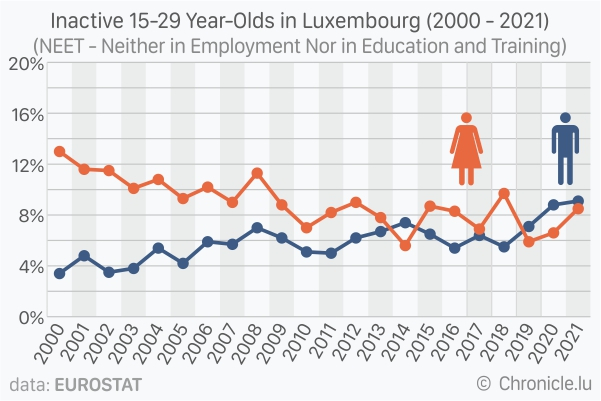
Data compiled from European statistics agency Eurostat showed that the proportion of young people in Luxembourg aged 15 to 29 who were neither employed nor involved in any education or training, has been increasing since 2019.
The indicator, also known as NEET (neither in employment nor in education and training), measures the share of the young population who are neither employed nor enrolled in any formal or non-formal education or training in the four weeks preceding the Labour Force Survey (LFS) undertaken by Eurostat.
In 2021, the proportion of young people who were NEET in Luxembourg was 8.8% - the highest figure since 2008 (9.2%). However, this was less than the European Union (EU) average of 13.2% in 2021.
In absolute numbers, about 10,500 (rounded) young people in Luxembourg of aged 15 to 29 were NEETs in 2021.
In comparison, the highest share of NEETs in the EU in 2021 was recorded in Italy (23.1%), followed by Romania (20.3%) and Bulgaria (17.6%). On the other hand, the lowest rates were reported in the Netherlands (5.5%), followed by Sweden (6.0%) and Slovenia (7.3%).
Historically, young women in Luxembourg have had higher NEET rates than young men, but the situation has improved over the years. Since 2019, young women reported less inactivity compared to young men. Across the EU, Romania and Italy reported that every one in four young women was neither employed nor in education or training in 2021.
In terms of nationality, in 2021, fewer Luxembourg nationals were inactive (6.8%) compared to other EU nationals living in Luxembourg (8.5%) and non-EU citizens (23.0%).
The NEET rates also decreased with the education level attained, affecting only 5.7% of young people with tertiary education and 9.0% in the case of secondary and post-secondary education but not tertiary education; the rate 11.3% in the case of young people with less than lower secondary education.








